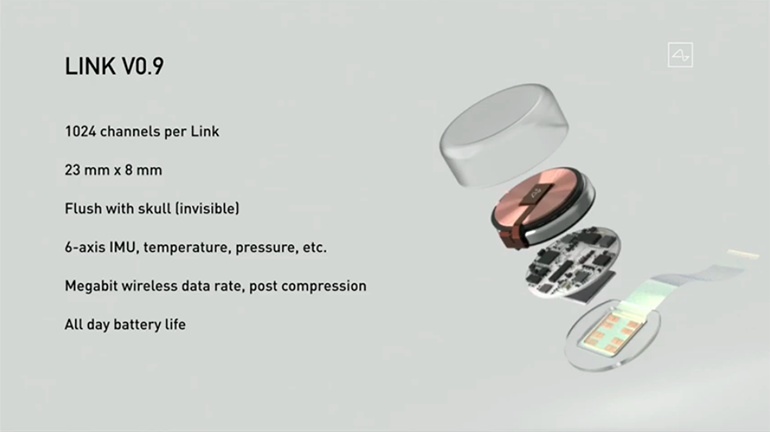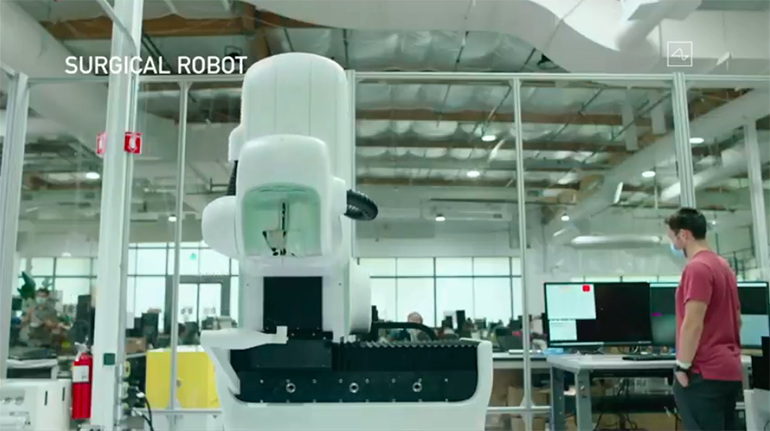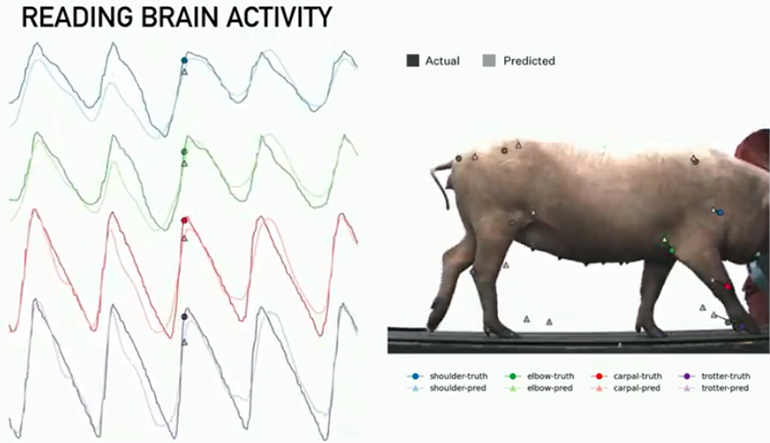Neuralink: Fact Vs. Fiction
Disclaimer: This post is an aggregation of research through various articles and threads. I have my sources cited at the end of the page for anyone interested, but in no way am I an expert in this field, nor do I claim to be. Everything discussed is through reference to already existing information, as well as Reddit (don’t worry, only for commentary).
Table of Contents
” All truth passes through 3 stages.
First, it’s ridiculed.
Second, it’s violently opposed.
Third, it’s accepted as being self-evident “
German Philosopher Arthur Schopenhauer
Introduction
As we near the close of 2020, a lot of things have been happening. The political climate and general injustice rampant throughout the country. The forthcoming elections and the unfathomable duo of competitors aiming to take a seat in office. The slow and painful approach to the one year mark since the world was plagued with COVID-19. A lot is going on.
In no way am I equating the importance of today’s topic to these general issues. That was merely an attempt at an introduction. 2 weeks ago, Elon Musk’s company, Neuralink, hosted an event that led on a lot of hype. Some said it was a lackluster performance, while others were more optimistic. The company has been working on an implantable brain device that aspires to solve a lot of problems of human suffering, and this event acted as an update on the progress made. Although a lot of disappointment and general pessimism surrounded the responses to the event, there are a lot of interesting aspects that are worth discussing.
Despite the hype, I wanted to dive into the real meat and potatoes. What has Neuralink achieved? Is it tangible? What are the implications for the future of BMI’s? Before discussing all of this, we need to lay the groundwork for what we’ll be talking about.
What is a BMI?

It’s important that we first outline the general domain that Neuralink bases its operations in. As the name implies, the brain is what we’ll be talking about today.
To flex my 3 years of experience as a Neuroscience student (eventually switching to Cognitive Science), let’s talk about some basics. Our brains, weighing about 3 to 4 pounds, contain approximately a trillion (10^12) nerve cells, formally known as neurons. These neurons are able to communicate through connections, otherwise known as synapses, which are on the order of about 10 MILLION BILLION. That’s 1,000,000 BILLION’s. Bruh. That’s 100 to 1000 TRILLION. 10^14. That’s a LOT of connections (Reisberg, Cognition). Okay, I’m done.
These synapses are what allow the neurons to send signals between one another, by means of chemicals known as neurotransmitters. Neurotransmitters are released at the end of one neuron and attach to receptors outside of the receiving end of another. Now for those of you who know your stuff, you’ll notice that we’re going to skip over the discussion of Ions and how the chemicals play a role because it’s not relevant here. All you need to know is that depending on the type of neurotransmitter, as well as the receptors present on the receiving cell, different neurons will react uniquely. When a neuron receives these chemicals from the synapse, it will react and make a decision based on the type of neurotransmitters it was given, a decision of whether it should fire an electrical current to the next neuron or not.
Now, we’ve essentially established that neurons can have electrical activity on an individual neuronal basis. Intuitively, if we wanted to learn how to read our thoughts, or save and replay our dreams, we should look towards these electrical impulses, right? Maybe see if there’s a pattern in the activity of our neurons? You’re probably familiar with a Voltmeter, that thing you used in a Physics lab to test the electrical potential of a circuit or a lightbulb. How can we apply this to neurons? Can we measure the electrical output of neurons?
Intro Hans Berger. In 1924, he discovers this electrical activity of neurons, and develops a method for measuring them, called the EEG, or electroencephalography. This essentially allowed him to observe oscillatory activity, or waves, of current being produced by the brain. He did this by placing electrodes, or conductors, on the scalp and non-invasively measured the electrical readings emitted by the brain.
The reason I mention all of this is that a BMI, or Brain-Machine Interface, is a device that acts sort of as an EEG, detecting electrical activity in the brain, with an added feature: **this interface has bidirectional information flow. **Not only can it receive information about the brain, but it can also perform neuromodulation, whereby you can alter the activity of nerves through targeted electrical stimulations. Additionally, the neuronal information being received can be translated into commands that are capable of controlling external software or hardware (like a computer cursor or robotic arm).
It’s important to note that BMI’s are different from Neuroprosthetics. A neuroprosthetic device is any prosthetic, whether a fake arm or leg, that USES a brain-machine interface to function. The BMI translates information for the neuroprosthetic to use. Essentially, the prosthetic is the physical replacement, while the BMI is the behind the scenes functionality.
Neuralink: Fact vs. Fiction
Neuralink is essentially a brain-machine interface that can be surgically implanted into the skull in order to perform neuromodulation and receive data about the brain’s functionality.
What was actually revealed?
You’ve probably already heard that the presentation was pretty underwhelming to most, especially if you’re focusing strictly on the facts. There was no monkey that could control a computer, as previously claimed by Musk, but here’s a basic rundown of the most important updates.
The Device

Here’s a basic summary of the device itself:
- It no longer has an externally visible component behind the ear but is now fully concealed as an ~8mm thick device that would rest within the skull, about the width of a coin
- It’s charged through induction (essentially you would ‘plug-in’ before sleeping)
- It contains 1024 electrode channels for recording and stimulation
- It utilizes bluetooth 5.2 to communicate information
The Surgical Robot

Musk also unveiled the robot behind the procedure: a futuristic, elegant looking device that would perform the invasive implant surgery in ‘under an hour.’ Knowing that it’s a very uneasy thought to voluntarily choose to get brain surgery from a robot, Neuralink teamed up with an industrial design firm, Woke Studio (what a name), to make something clean, modern, but still friendly feeling. However, many have noted that the robot itself is the same as previously displayed a year ago, just a lot cleaner in its cosmetics.
The Demo

Along with the device and the surgical robot, a live demo was performed, showing 3 pigs at different stages of the implanting process:
- Received 1 Implant and still has it
- Received 1 Implant and had it successfully removed
- Received 3 Implants and still has them
This portion was done to show the different stages that one could undergo while still being healthy and functioning properly. Whether you, as the consumer, choose to receive a single implant, receive multiple implants, or decide that you change your mind and want it removed, it would all be possible.
The Specifics and Thoughts
Starting with the demo, it was pretty underwhelming for most. It showcased the 3 pigs, with 2 of them having the Neuralinks implanted, detecting the neurons in their snouts as they move around, scan their surroundings, and eat. Musical beeps representing the neurons firing could be heard as the graphs showed the 1024 electrodes recording impulses of the individual neurons. I think the misconception here is that, although this could already have been done with any other EEG device on the market, the pigs were visibly happy and active.** They weren’t bedridden, nor were they noticeably bothered by the device (this IS subjective).** The potential that should be highlighted here is that one can have this device implanted, and much ‘like a FitBit’ or Apple Watch checks your heart rate, passively allow the Neuralink to monitor the neurons in your brain as you go about your day, fully unaware of any sensation or restrictions. The freedom to do as you please, and simply charge the device every night, is definitely an ambitious move. Pitting it against the Utah Array, another popular and well known BMI option, it is fairly impressive that this device, despite how small, fits 1024 electrodes. The Utah Array, which has been used for Neuroprosthetics in the past, only contains 256 electrodes. This definitely makes a huge difference, considering its 4x the density, much smaller, and is pitched to one day be for the average consumer.
Another aspect of the demo was showing the pigs running on a treadmill, and how the researchers at Neuralink were able to track and predict the location of the 4 limbs. Although this is something that we tend to take for granted in our day to day lives, people with spinal cord injuries, quadriplegics, and paraplegics can definitely appreciate this feat. As Neuralink becomes more and more developed, there is hope placed in the company that, by using this information, the field of Neuroprosthetics can see great advancements.
Addressing Skepticism
Now that the facts are on the table, we can discuss some of the implications and whether it actually is important in any way. Here’s a non-exhaustive list of the main gripes with the presentation:
- There were NO human trials or results, nor any verbalized plans of performing them in the near future
- In order to simulate known medical therapies, the electrodes would need to go deeper into the brain - Neuralink simply rests above the cortex (outer layer of the brain)
- It’s too shallow to view neurons as simply binary bits determined by whether they fire or not - there’s a lot more information being passed within the neurons, through the chemical neurotransmitters, the cell bodies functionality, etc.
All of which is fair, if we’re viewing this presentation from the lens of a company displaying their final product. But I think a CRUCIAL point that’s being overlooked is that this is coming from a company of approximately 100 people. It’s only been a year since the last update and never was a promise made by Neuralink or Musk that there would be any significant advancements IN THE NEAR FUTURE. Everything that’s being said is about the POTENTIAL implications in the future. About how this device CAN change the way humans interact with technology and CAN solve major issues that are plaguing us as a species. The FDA only just gave Neuralink the Breakthrough Devices Program approval, which allows the company to expedite its development and testing. To address the human trials and results, Neuralink was smart not to make any binding promises, and with this new change in pace that the FDA approval provides, we can hope to see progress in this domain soon.
The biggest issue with going deeper into the brain is the abundance of vascularity present all around. In simpler terms, veins and arteries are everywhere, and finding an appropriate path to insert electrodes is a tricky one, in order to avoid these obstacles. Neuralink announced that the robot takes the vascularity of the brain into account, but hasn’t given more details as to the extent that this is done.
As for the shallowness of viewing neurons as a simple ‘on’ or ‘off.’ We as a species are aware of how little we know about the brain, and ongoing research continues to uncover how difficult it would be to replicate it on any level. Everyone has their own perceptions, experiences, memories, and consciousness. But why do we have to know everything about the brain to interact with it? Placing the understanding of the brain as a prerequisite to potential solutions is a huge fallacy. Instead, think of it as a circular problem. From an engineering perspective, all they need is to get the neurons to start communicating with computers (which they’ve successfully showcased), and from there, allow the machine learning technologies to do the rest. Once the computers are able to receive ongoing signals from the brain, the algorithms can detect statistical regularities, learning any key features that may be notable to the researchers about the specific problem at hand, whether its about patients with depression, a degenerative disease, or a spinal injury. Through this pairing of technologies, we can learn more about the brain, as well as about how we can fine-tune our interactions to improve therapy procedures. Neuralink has most definitely not ‘solved the brain,’ but they’re merely using engineering to interact with the brain, while simultaneously learning, a loop that can only prove to be beneficial.
Entertaining Interesting Possibilities
Lex Fridman, a prominent character in the Machine Learning world, did a solo podcast discussing all the interesting ways that Neuralink could change our futures. If you’re interested, here it is. Some of the topics he talks about include:
- Gaming and VR
- Telepathy
- Memories and Immortality
- Human and AI Symbiosis
I came across a couple of interesting possibilities for what a future population with Neuralinks could bring. Remember, this is just food for thought, not empirically backed, but definitely fun to think about and wonder at the possibilities. Skip over this if you don’t want any hypothetical garbágé.
Telepathy
Putting together this post was tough for me, because like any actual writer will tell you, it’s sometimes difficult to put into words what you want to express. But imagine you’re able to directly communicate those thoughts to someone else, directly through Bluetooth? You could essentially ‘Airdrop’ an idea or the understanding of a concept. Imagine essentially downloading information to your brain, either socially or academically. It’s interesting to note though, how America already has such a huge income gap and disparity between the classes; how would an intellectual gap look? Would we all be pressured and eventually expected to get a Neuralink, or similar device, in order to stay relevant? On a much smaller scale, our phones are things we tend to generally look over but if you think about it, are we not already carrying around devices that we need on a day to day basis? Without our phones, we would be at an extreme disadvantage in the current day and age. Are Neuralinks, on a simplified scale, simply a faster way to perform the same input/output tasks we do on our mobile devices? Is the merge between humans and AI, achieving AI Symbiosis as Musk envisions, plausible, and inevitable?
Putting lots of question marks in a paragraph makes it seem very pretentiously thought-provoking but, I genuinely am curious to see how all of this plays out. Most likely, our kids or grandkids will be the ones to lavish in this technological advancement, but we can only hope.
Replaying Memories and Dreams
Lucid Dreaming would become a sport. That, in and of itself, is crazy to think about.
Digital Drugs
If Neuralink ever became open-source or allowed third-party coders to create programs for the device, it’s inevitable that finding a way to get a user high would be on a list, somewhere. The Dark Web would become rampant with software rather than material drugs as drug lords create digital heroin. Wild.
Takeaway: Hope
Elon Musk is a multidisciplinary entrepreneur, owner of Tesla, SpaceX, and Neuralink. Each of these companies is addressing a prominent issue of our generation: climate change, the exploration of space, and human suffering, respectively. Despite the apparent let down of what was hoped to be a huge reveal, I think its really important that we note the biggest takeaway from the event: hope and inspiration. As the company currently employs a mere 100 or so people, there is a DIRE need for engineers, researchers, developers, neuroscientists, and much more. Neuralink may not be doing any meaningful research YET, but they ARE showcasing extremely meaningful developments by bringing research we already know about in line with the technologies we currently have. If you don’t think this is a big deal, ask anybody who works in a hospital and uses those systems. Outdated research and information are difficult to utilize if the tech we use to interact with it isn’t up to speed. What Neuralink is trying to achieve, at least from my opinion of the event’s outcome, is buy-in from academia and scientists applying for the job. They NEED more members to apply and become a part of the movement. They want public support in their ambitions for decreasing human suffering and making lives better. The presentation and outlook of the company is merely a source of inspiration to those that aren’t in the field to look in their direction, whether its investors, DIY enthusiasts, or curious eyes like you and me.
The Wright Brother’s achievement of flight was completely overlooked by writers at the time. Some didn’t believe them and claimed they lied for attention. Other’s were overly skeptical and criticized their ambition. But they achieved what was deemed an impossible feat at the time. Nobody would have thought that flight was even in the scope of possibility, let alone happen within hundreds of years. But they did it. Arthur Schopenhauer’s quote rings quite true. Ridicule and mockery, as well as violent opposition, is simply the nature that surrounds any novel innovation. Are we walking into an era of voluntary mind control, with our data being sold to the government? Will we become a species of dehumanized robots? Is this how Altered Carbon becomes a reality?
It’s easy to cling to the most skeptical point of view, especially when it’s being replicated by the masses. But don’t forget that SpaceX has made immense progress in the last decade, pairing with NASA to launch astronauts into orbit. Tesla’s are almost as affordable as a new Camry or Corolla, but significantly safer for the environment. So why is Neuralink such a stretch? Sure, the goals as of right now are not empirically backed, but they’re just that. They are GOALS, and you can’t overhype goals you want to one day achieve. Aspirations are meant to be high so that we land somewhere below. What’s the corny saying, shoot for the stars and land on the moon. There you go.
Ambition is needed in order to continue pushing the limits of what’s possible. I’m hella excited to see where this can go in the future, and what the (hopeful) influx of intelligent minds to the company can bring in terms of innovation, research, and approaching a future with a better quality of life.